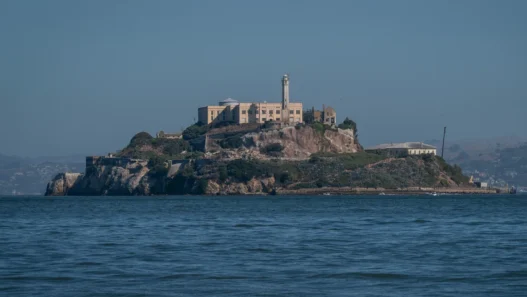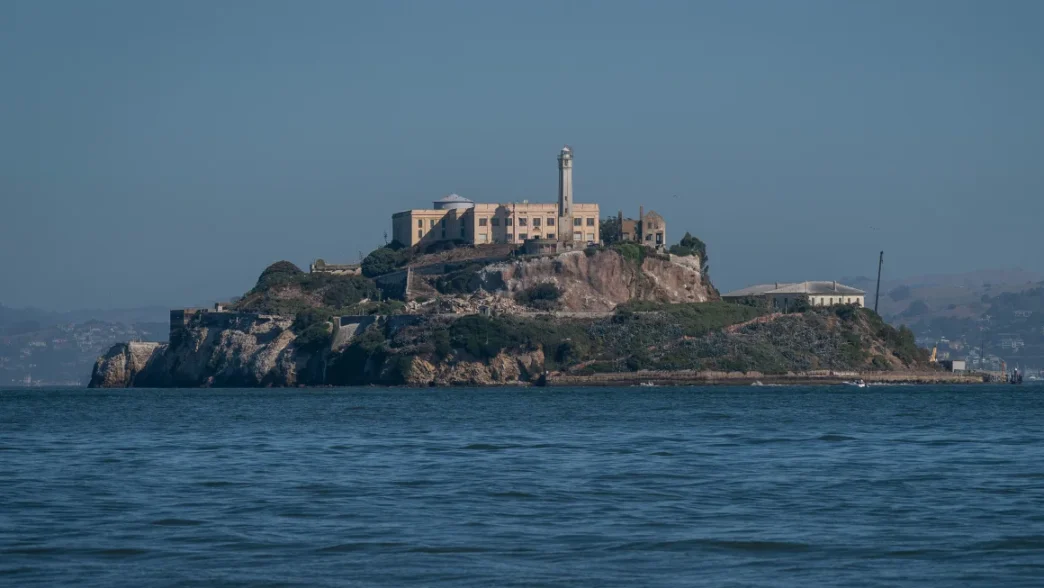On May 4, 2025, former President Donald Trump made headlines with a bold proposal: to reopen the infamous Alcatraz Federal Penitentiary and convert it into a modern maximum-security prison for what he described as “America’s most ruthless and violent offenders.” The announcement, made through his social media platform Truth Social, sparked immediate reactions from political leaders, criminal justice experts, and the public.
This move marks a dramatic shift in the federal government’s incarceration strategy, bringing back to life one of the most legendary prisons in American history. But it also raises serious questions about cost, legality, symbolism, and the direction of criminal justice policy in the United States.
A “Tough on Crime” Agenda Revived
Trump has long promoted a “law and order” agenda, and this initiative aligns with that platform. In his statement, he emphasized the need to send a strong message to violent criminals, suggesting that reactivating Alcatraz would serve as a powerful deterrent.
“Alcatraz is not just a prison — it is a symbol. Reopening it tells the worst criminals in America that we are serious about law and order,” Trump declared.
He has directed the Bureau of Prisons (BOP), Department of Justice (DOJ), and other federal agencies to begin planning for the facility’s rehabilitation and reopening. The vision includes updating the prison to meet 21st-century standards, improving security infrastructure, and potentially increasing its inmate capacity.
A Historic Site with a Dark Past
Alcatraz Island, located in the middle of San Francisco Bay, housed the Alcatraz Federal Penitentiary from 1934 to 1963. Known for its extreme isolation and high security, it became home to some of the most notorious criminals in U.S. history — including Al Capone, George “Machine Gun” Kelly, and Robert Stroud, the “Birdman of Alcatraz.”
The prison was closed in 1963 due to rising operational costs and structural decay. Since then, Alcatraz has been managed by the National Park Service and transformed into a major tourist destination and historical landmark. Over a million people visit the island each year to explore its legacy.
Reopening it as a functioning prison would require not only major renovations but a complete rethinking of how it fits into both the justice system and the public’s imagination.
Criticism from Political Leaders and Experts
The announcement has drawn swift backlash from Democratic leaders and legal experts. Former House Speaker Nancy Pelosi called it “a media stunt and political theater,” arguing that it undermines both the criminal justice system and the cultural heritage of the Bay Area.
California Governor Gavin Newsom stated that there is “zero chance” the state would cooperate with such a proposal, noting that Alcatraz is a protected landmark. State Senator Scott Wiener said reopening the prison is “deeply unserious” and part of a broader trend of anti-democratic behavior by the former president.
Beyond political opposition, criminal justice experts warn that the plan distracts from real issues like mass incarceration, prison reform, and rehabilitation. Some argue that reopening Alcatraz could promote outdated, punitive models of justice rather than evidence-based solutions.
High Costs and Logistical Nightmares
One of the main reasons Alcatraz closed originally was its enormous operating cost. Every supply — food, water, fuel — had to be brought in by boat. Restoring the deteriorated infrastructure to meet modern prison standards could cost billions.
Experts also note that the Bureau of Prisons is already under pressure, facing staff shortages, outdated facilities, and increased scrutiny over abuse and mismanagement. Many question whether reopening an isolated, high-maintenance facility like Alcatraz is even feasible given current budget constraints.
Moreover, turning a protected national park into a prison would likely require major legal changes and face lawsuits from conservation groups and state officials.
What Would a Modern Alcatraz Look Like?
According to early reports, the Trump administration envisions a high-tech, ultra-secure version of Alcatraz that could potentially house hundreds of inmates. The focus would be on maximum security — including individuals convicted of terrorism, organized crime, and violent repeat offenses.
Some supporters argue that Alcatraz could help reduce overcrowding in other federal prisons and serve as a location for specialized incarceration needs, such as solitary confinement or high-risk containment.
However, critics argue that the symbolism of reopening such a notorious facility sends the wrong message and harks back to a darker era in criminal justice history.
Part of a Bigger, Controversial Agenda
This announcement comes as part of a wider set of Trump-era proposals aimed at drastically overhauling the U.S. justice system. These include detaining undocumented immigrants at Guantanamo Bay, reinstating aggressive stop-and-frisk policies, and even sending some federal inmates overseas — ideas that have alarmed civil rights groups.
Legal experts predict that even if the plan moves forward, it will face a mountain of litigation from environmental groups, the state of California, and prison reform advocates.
Still, Trump has remained defiant.
“We are not playing games with violent criminals. If Alcatraz worked once, it can work again — even better.”
Public Opinion Split on the Move
Initial polls indicate a divided public response. Some conservative voters support the plan, seeing it as a tough but necessary action to deal with rising violent crime. Others, particularly in liberal-leaning states, are concerned about the ethical and financial implications.
Tourism groups, environmentalists, and San Francisco residents have also voiced strong objections. For many, Alcatraz is not just a relic of the past but a powerful symbol of justice, redemption, and historical memory.
Conclusion: Can the Past Serve the Present?
Trump’s call to reopen Alcatraz has sparked a storm of debate and brought renewed attention to the island’s storied legacy. While the plan taps into powerful themes of justice and retribution, it faces major logistical, financial, and legal barriers.
As the country watches the story unfold, one thing is clear: Alcatraz, once a fortress of punishment, may soon become a battleground of ideology — where history, justice, and politics collide.










